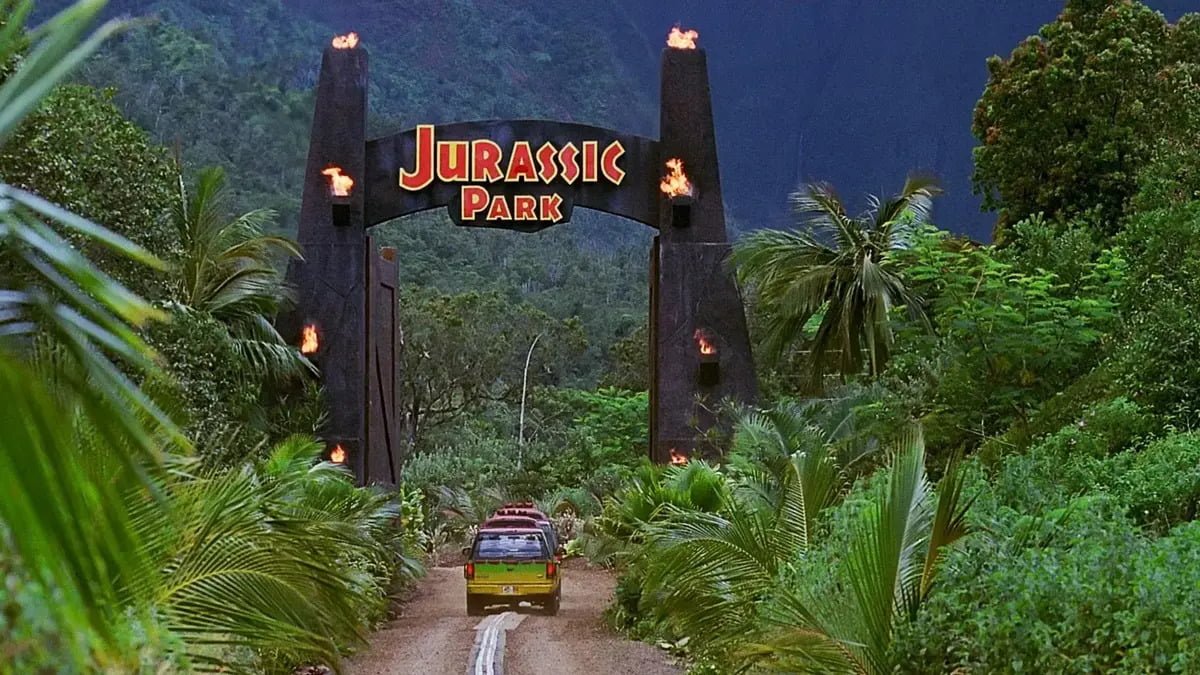In 1993 Steven Spielberg dazzled audiences with the Jurassic Park movie. The film showcased some of the most groundbreaking special effects of the twentieth century. Michael Crichton’s novel told the unprecedented tale of the genetic recreation of extinct animals. His novel quickly captured the attention of Spielberg, who knew it would become a very successful film.
The story’s concept shockingly critiques the hubris of man. While science has long been hailed as the savior of mankind, we must stop to consider the darker side of science.
The “lack of humility before nature” represents our modern world in a way that resonates with the audience. While a work of fiction, the message resonates in our world of uncontrolled scientific advancement.
Jurassic Park captivated an entire generation of dinosaur addicts, leaving behind a legacy exceeding even that of previous film wonders. Prior works such as Jaws and King Kong set the stage for the genre; Jurassic Park stole the show.
Remarkably, the film remains relevant in an era of incredible special effects. The technology incorporated by the crew fundamentally changed film-making standards. Jurassic Park stands the test of time whereas other films often appear dated due to their timeless themes and superb special effects.
Jurassic Park tells a far-fetched fantasy adventure in the most compelling way possible. The plot grounds itself in science, bringing back extinct animals using top-of-the-line genetic technology. John Hammond, the billionaire park founder, invites a group of scientists to tour the park. The sight of living dinosaurs is breathtaking, however, the group cannot ignore the untold dangers that this new park presents. The words of Ian Malcolm foreshadow the horrific events that transpire. This park will alter the world of man forever.
The epic adventure continues to captivate audiences. While some younger viewers connect more with the modern Jurassic World sequels, no one can deny the impact of the original film. Jurassic Park has cemented a legacy in pop culture and a profound work in the genre.
Making The Jurassic Park Movie
The idea of Jurassic Park began in the mind of author Michael Crichton. While talking with Steven Spielberg about his latest writings, Crichton mentioned his newest book, a story about recreating dinosaurs from DNA remains. Spielberg was immediately excited and interested in bringing Crichton’s novel to the big screen. Interestingly, Crichton faced a series of rejections before the novel Jurassic Park received approval from his editors.
Movie-making technology advanced rapidly during the 1990s. Therefore, this movie required a whole new level of special effects to appease the appetites of critical audiences. Spielberg enlisted the help of Stan Winston, Phil Tippett, Dennis Muren, and Michael Lantieri for the film’s special effects and John Williams for the musical score. Together, the team revolutionized the technology of movie-making and ushered in the twenty-first century in dramatic fashion.
Spielberg insisted on making the dinosaurs look as realistic as possible. He adapted key scenes from the novel and then sent over the storyboards to Phil Tippett’s team of animators to bring them to life. The go-motion technology provided by Tippett’s animators was some of the best of its time, yet Spielberg still expected more.
He was interested in looking at the new technology of computer-generated images (CGI) as an alternative. The initial tests conducted by Industrial Light and Magic (ILM) exceeded expectations. The final decision to go with CGI over stop-motion came after ILM beautifully demonstrated the advantages CGI could provide.
Despite this transition, Phill Tippett was not extinct yet. His team of animators had substantial experience in replicating animal behavior. Spielberg felt their contributions would be crucial to producing the level of realism necessary to make the dinosaurs come to life. Tippett’s animators joined forces with ILM and Stan Winston Studios to create the various dinosaurs featured in Jurassic Park.
Putting it all Together
The filming of Jurassic Park included location shooting in Hawaii as well as on indoor stages. Notably, casting efforts sought to bring together a crew of talented actors rather than simply assembling Hollywood stars. Consequently, the combination of phenomenal actors, groundbreaking special effects, a compelling story, and a tremendous musical score made Jurassic Park an instant classic.
Jurassic Park was released in theaters on June 11, 1993. It became an instant box office hit that would continue its legacy with four sequels: The Lost World Jurassic Park, Jurassic Park 3, Jurassic World, and Jurassic World Fallen Kingdom.
Dinosaurs create a sense of wonder beyond that of any modern creature. Jurassic Park remains an iconic film worldwide, and even two decades after its release the film still holds up well by modern film standards.
The franchise has become wildly successful, with five sequels, a Netflix series, dozens of video games, and theme park attractions at Universal Studios parks. We have covered the rides in another article that answers the question: is the Jurassic Park ride scary?
The Cast of Jurassic Park
John Hammond
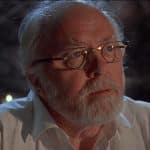
Played by: Richard Attenborough
Bio: John Hammond is the billionaire owner of Jurassic Park. His dream is to create the ultimate theme park to show the world living dinosaurs. Despite his best intentions, his creation proves to be a disastrous mistake. Ultimately, Hammond realizes that the kind of control he sought was impossible.
Dr. Alan Grant

Played by: Sam Neil
Bio: Dr. Alan Grant, one of the most famous paleontologists of his day, is selected by John Hammond to visit Jurassic Park before the park is open to the public. Despite his delight in observing living dinosaurs, Grant is skeptical of the park. When the power fails, Grant overcomes and must escort Hammond’s grandchildren to safety.
Dr. Ellie Sattler
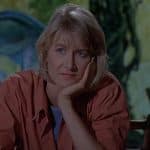
Played by: Laura Dern
Bio: Dr. Ellie Sattler is the paleobotanist whom Hammond enlists for the first tour of Jurassic Park. She is Alan Grant’s girlfriend and is a witty and outspoken scientist. Both awed and cautious, she is seriously concerned about the park. She understands the dangers and tries to convince Hammond to abandon his fantasy.
Dr. Ian Malcolm
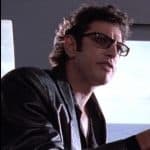
Played by: Jeff Goldblum
Bio: Dr. Ian Malcolm is a witty mathematician who specializes in chaos theory. He becomes one of the members of Jurassic Park’s first tour in response to investor concerns. His research indicates that Hammond’s park is destined to fail. He asserts that the level of control attempted by Jurassic Park cannot be achieved.
Donald Gennaro

Played by: Martin Ferrero
Bio: Donald Gennaro represents the investors of Jurassic Park and makes a trip to the island in response to investor concern after the death of a park worker. Once a major skeptic of the park, Gennaro quickly changes his mind after he realizes how profitable Jurassic Park could be.
Lex Murphy
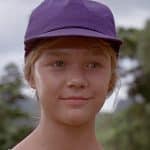
Played by: Ariana Richards
Bio: Lex Murphy is Hammond’s granddaughter and takes part in the first tour of the island. Lex is attracted to Dr. Grant, and like Tim, looks for every opportunity to spend time with him. Her knowledge of computers proves very useful when trying to get the park’s security systems back.
Tim Murphy
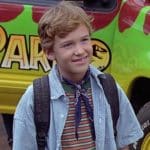
Played by: Joeseph Mazzello
Bio: Tim Murphy is the grandson of John Hammond and the younger brother of Lex. Hammond invites his grandchildren to take part in the first tour of the island. He is a young dinosaur fanatic who idolizes Alan Grant and seeks endlessly to gain his respect. Tim has perhaps the most near-death encounters of anyone.
Robert Muldoon
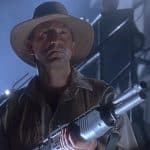
Played by: Bob Peck
Bio: Robert Muldoon is the game warden of Jurassic Park and one of the experts on Velociraptor behavior. He has spent enough time in the park to understand the dangers presented by these extinct animals. Muldoon is one of the few park employees who truly respects the animals and realizes how dangerous the park is.
Ray Arnold
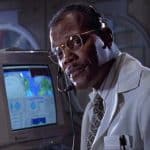
Played by: Samuel L. Jackson
Bio: Ray Arnold is one of the most vital members of the control room staff. He plays a key role in keeping the Jurassic Park software running smoothly. Mr. Arnold must find a way to restore order after the park systems are devastated by Dennis Nedry. Arnold must take drastic measures to restore order in Nedry’s absence.
Dennis Nedry
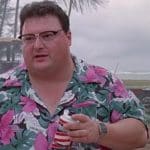
Played by: Wayne Knight
Bio: Dennis Nedry is the head programmer at Jurassic Park and has access to the park’s most important computer systems. Nedry is unhappy with the salary Hammond pays and feels that he deserves more. He accepts a deal to steal embryos for Lewis Dodgson and is responsible for the disaster in the park.
Dr. Gerry Harding
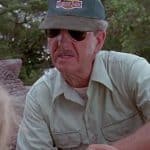
Played by: Gerald R. Molen
Bio: Dr. Gerry Harding is tasked with maintaining the health of the dinosaurs of Jurassic Park. Working with limited information, Dr. Harding serves as a pioneer in this new field. During the first tour, one of the Triceratops becomes sick. Dr. Harding strives to identify the source of the illness.
Dr. Henry Wu
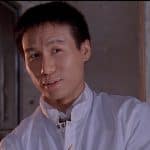
Played by: B.D. Wong
Bio: Dr. Henry Wu is the confident geneticist who supervises all of the dinosaurs bred for Jurassic Park. His confidence in technology leads him to believe that the dinosaurs are under control. Wu assures the tourists that the animals are unable to breed.
Lewis Dodgson
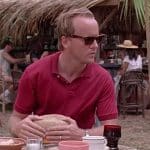
Played by: Cameron Thor
Bio: Lewis Dodgson is the corrupt CEO of a rival company. When he learns of what Hammond was able to do at Jurassic Park, Dodgson wants to steal the technology for his company to catch up with InGen. He pays Dennis Nedry 1.5 million dollars to steal the 15 dinosaur embryos on Isla Nublar.
Dinosaurs of Jurassic Park
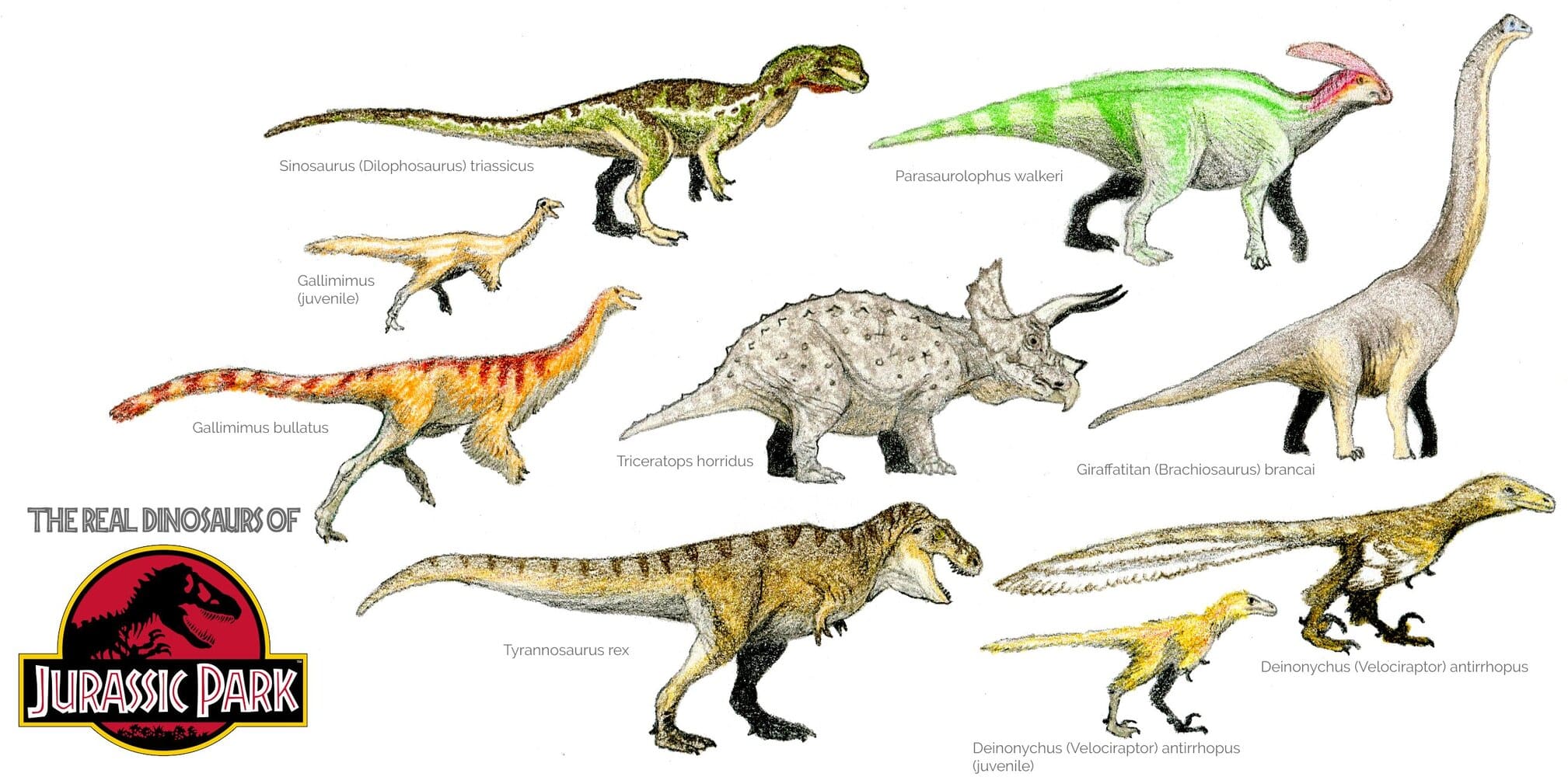
The Science of Jurassic Park
Can we Bring Dinosaurs Back?
The idea of bringing dinosaurs to life after 66 million years remains unlikely, even with the most advanced technology. Soft tissues that contain DNA are nearly impossible to preserve and even under the best conditions, DNA will degrade completely in about 6.8 million years.
Further, filling the gaps with the DNA of other animals would create hybrid creatures, unlike the dinosaurs depicted in the novels and films, which share hardly any characteristics with frogs. With this in mind, the likelihood of pulling this off at all remains rather slim.
Some scientists believe that a more likely scenario would be to modify the DNA of modern birds to develop dinosaur-like traits such as teeth or long tails. This technique was suggested by paleontologist Jack Horner, who plans to reverse-engineer birds into exhibiting traits of non-avian dinosaurs. Birds possess genes that have been selectively turned off through evolution. Even so, this is far from recreating an extinct dinosaur.
What is Chaos Theory?
Dr. Ian Malcolm presents his belief in chaos theory that predicts the failure of Jurassic Park before it even opens. In essence, chaos theory states that small changes in initial conditions can have a great effect on the future of the system. One phenomenon is the so-called “butterfly effect.”
In other words, subtle changes, such as a butterfly’s flapping wings, can have greater effects on the overall system by producing changes in atmospheric conditions. Thus, “[…] you get rain instead of sunshine.” Chaos theory has been applied to the study of various scientific fields since its first introduction in the 1880s. You can find a more in-depth analysis of chaos theory from The Conversation.
Are Birds Dinosaurs?
Simply put, yes. Paleontologists contend that modern birds should be classified as coelurosaurian theropods. Recent fossil discoveries highlight the striking similarities between dinosaurs and birds. It is now believed that most theropod dinosaurs were covered in feathers, including the movie stars Velociraptor, Gallimimus, and Compsognathus.
Feathers evolved before flight. Thus, many flightless dinosaurs developed feathers for other purposes. Scientists continue to debate the evolutionary origin of feathers. Temperature regulation and display remain among the most popular theories. Further research is needed to understand the progression of dinosaurs into modern birds fully.
Was T. rex Vision Based on Movement?
Dr. Grant states that the vision of Tyrannosaurus is based on movement. He tells Dr. Malcolm to remain still. This strategy, however, does not reflect our scientific knowledge. While the second novel corrects this inaccuracy, the subsequent films never address this issue.
T. rex had binocular vision and was probably very capable of finding its prey visually. Its vision is estimated to be far superior to that of humans and rivaled that of modern predatory birds. Therefore, even if a Tyrannosaurus couldn’t see you, your scent would give your position away. T. rex is known for having a highly evolved sense of smell, equaled only by some modern vultures.
Could Dilophosaurus Spit Venom?
The venomous spit from Dilophosaurus was purely fictional. The origin stems from Crichton’s novel. Crichton drew inspiration from the traits of modern animals. No fossils of dinosaur venom glands have been uncovered.
The similarity of dinosaurs to modern-day birds and reptiles does not rule out the possibility that some theropods may have used venom to kill their prey. In any case, this artistic adaptation has been replicated in popular culture and many people now have an unrealistic image of the Dilophosaurus.
Why was Velociraptor so Large?
The Velociraptor in Jurassic Park are portrayed as the size of a man. When Michael Crichton began research for his novel, Deinonychus antirrhopus was considered by some to be a species of Velociraptor. The dig sites in the films occur in Montana because of this misconception.
In the novel, Dr. Grant’s team excavates a Velociraptor antirrhopus and distinguishes this from the park’s Velociraptor mongoliensis. Many people cling to a misconception of this dinosaur due to this inaccurate depiction. Media examples routinely present dinosaurs following what they know from Jurassic Park. Although some similar dromeosaurs grew as large as the Jurassic Park dinosaurs, the real Velociraptor stood about 3 feet (1 meter) tall and lived only in Asia.
Best Jurassic Park Quotes
“Life uh… finds a way.” – Dr. Ian Malcolm
“Don’t you see the danger, John, inherent in what you’re doing here? Genetic power is the most awesome force the planet’s ever seen, but you wield it like a kid that’s found his dad’s gun.” – Dr. Ian Malcolm
“Clever girl.” – Robert Muldoon
“Hold onto your butts.” – Ray Arnold
“Dodgson, Dodgson, we’ve got Dodgson here! See, nobody cares. Nice hat. What are you trying to look like, a secret agent?” – Dennis Nedry
“I don’t believe it! You’re meant to come down here and defend me against these characters and the only one I’ve got on my side is the blood-sucking lawyer!” – John Hammond
“Dr. Grant, my dear Dr. Sattler, welcome to Jurassic Park.” – John Hammond
Jurassic Park Trivia
The original ending for Jurassic Park had one Velociraptor die from the crashing dinosaur skeletons and the other one taken down by John Hammond, with the SPAS-12 shotgun. Spielberg scrapped this scene in favor of the iconic Tyrannosaurus scene.
When Phil Tippett witnessed the initial production of CGI dinosaurs he knew that his approach of go motion was outclassed. He told Spielberg, “I think I’m extinct.” Spielberg incorporated this line into the film.
The famous ripple effect on the glasses of water was produced using guitar strings fed through the car dashboard.
When Denis Nedry drops the can of shaving cream containing the embryos it is covered by mud. This scene sets the stage for a sequel, however, the filmmakers abandoned this concept in favor of the adaptation of Michael Crichton’s novel.
During filming on the island of Kauai, the cast and film crew encountered a force of nature, eerily reminiscent of the movie’s plot. Hurricane Iniki, the most powerful hurricane in the recorded history of Hawaii, struck the island with devastating effects that demonstrated nature’s fury.

